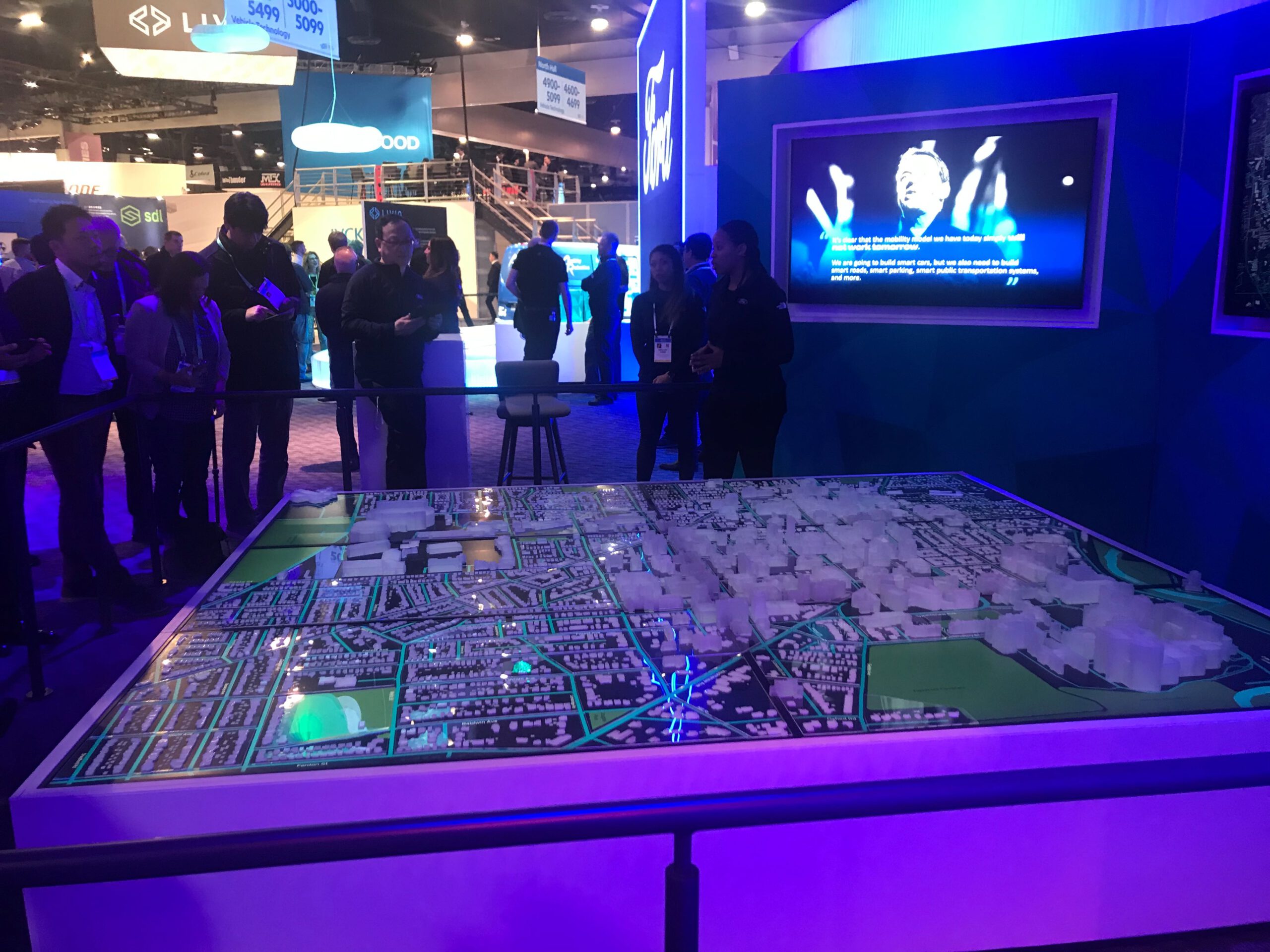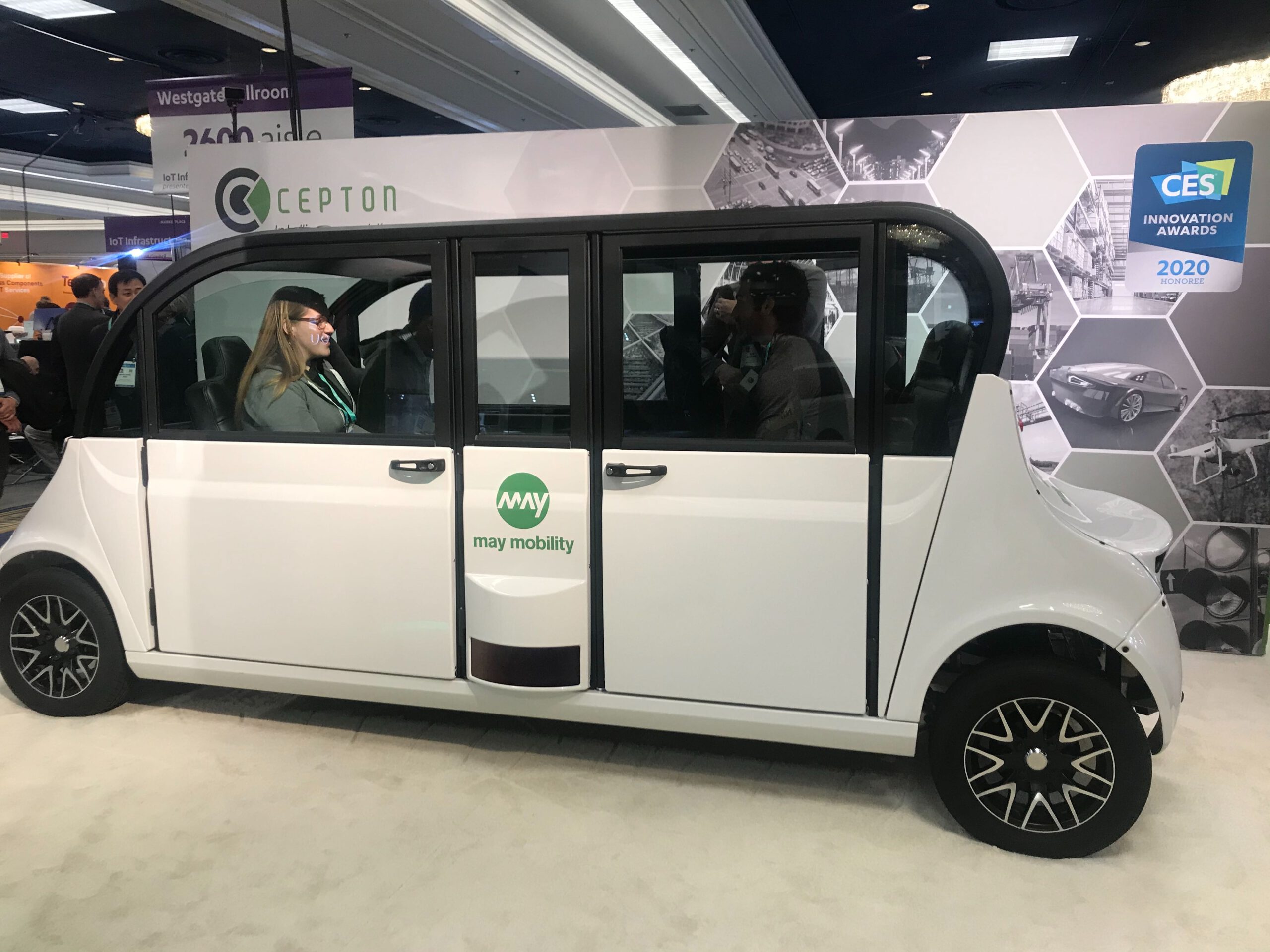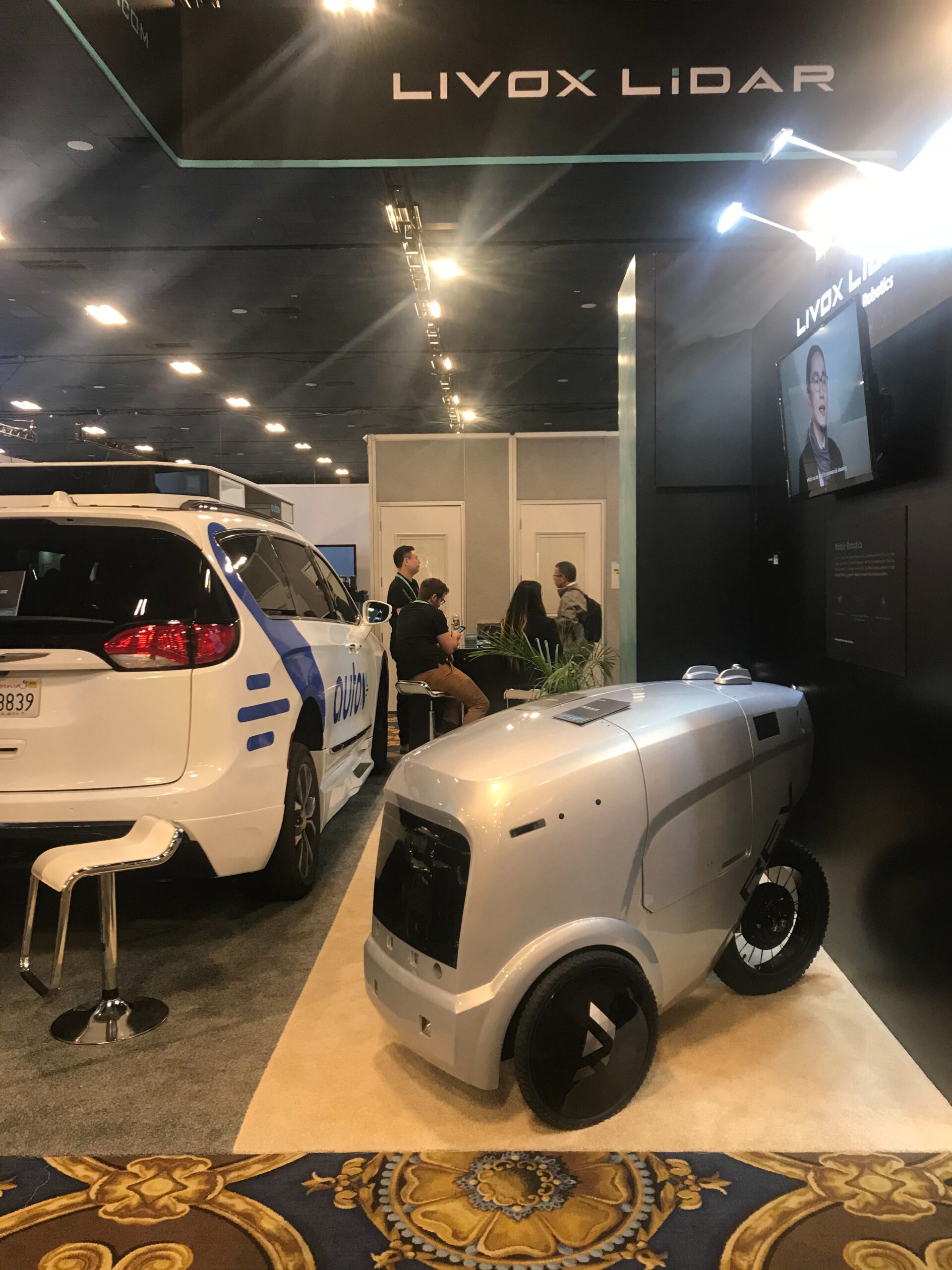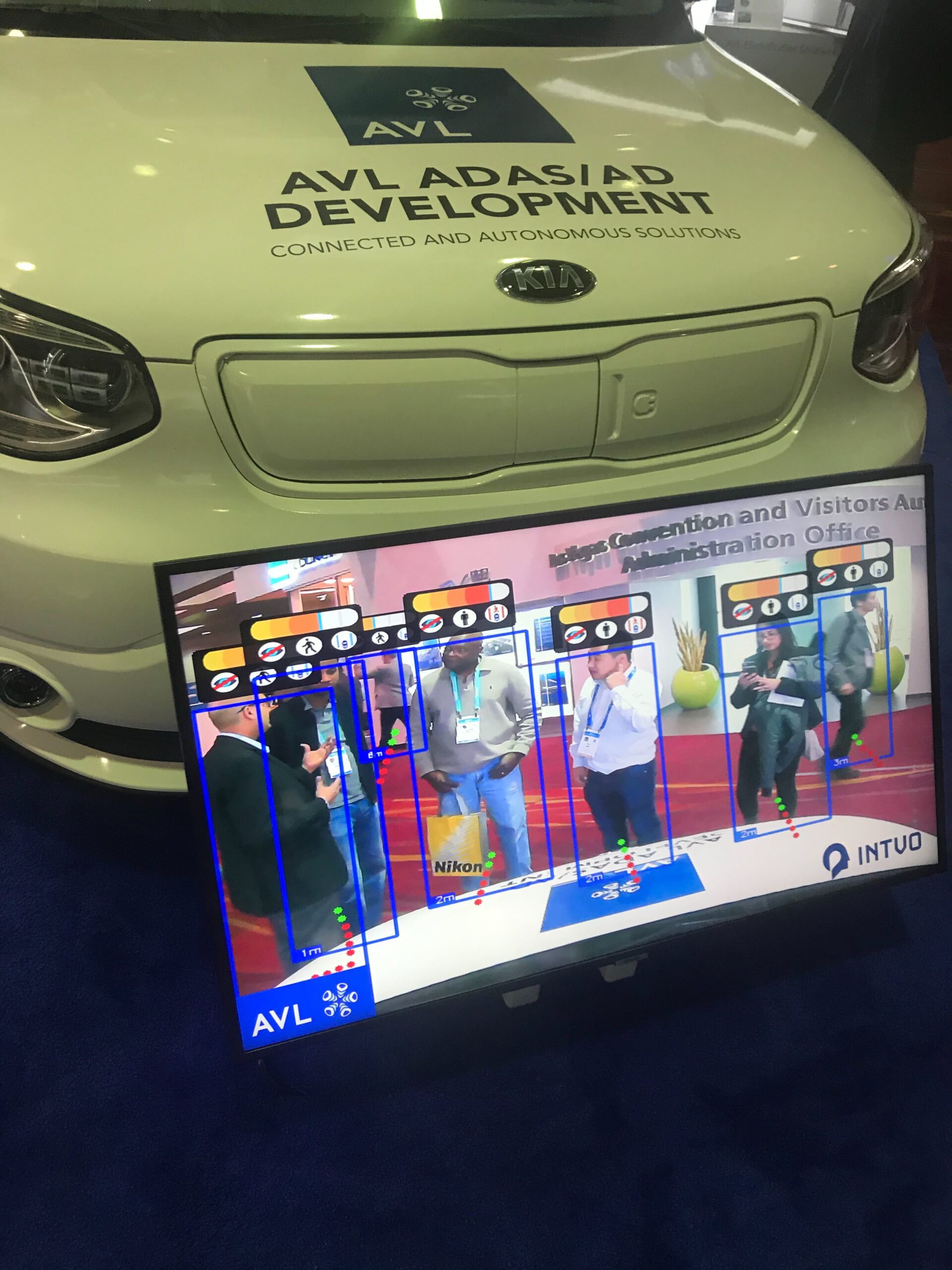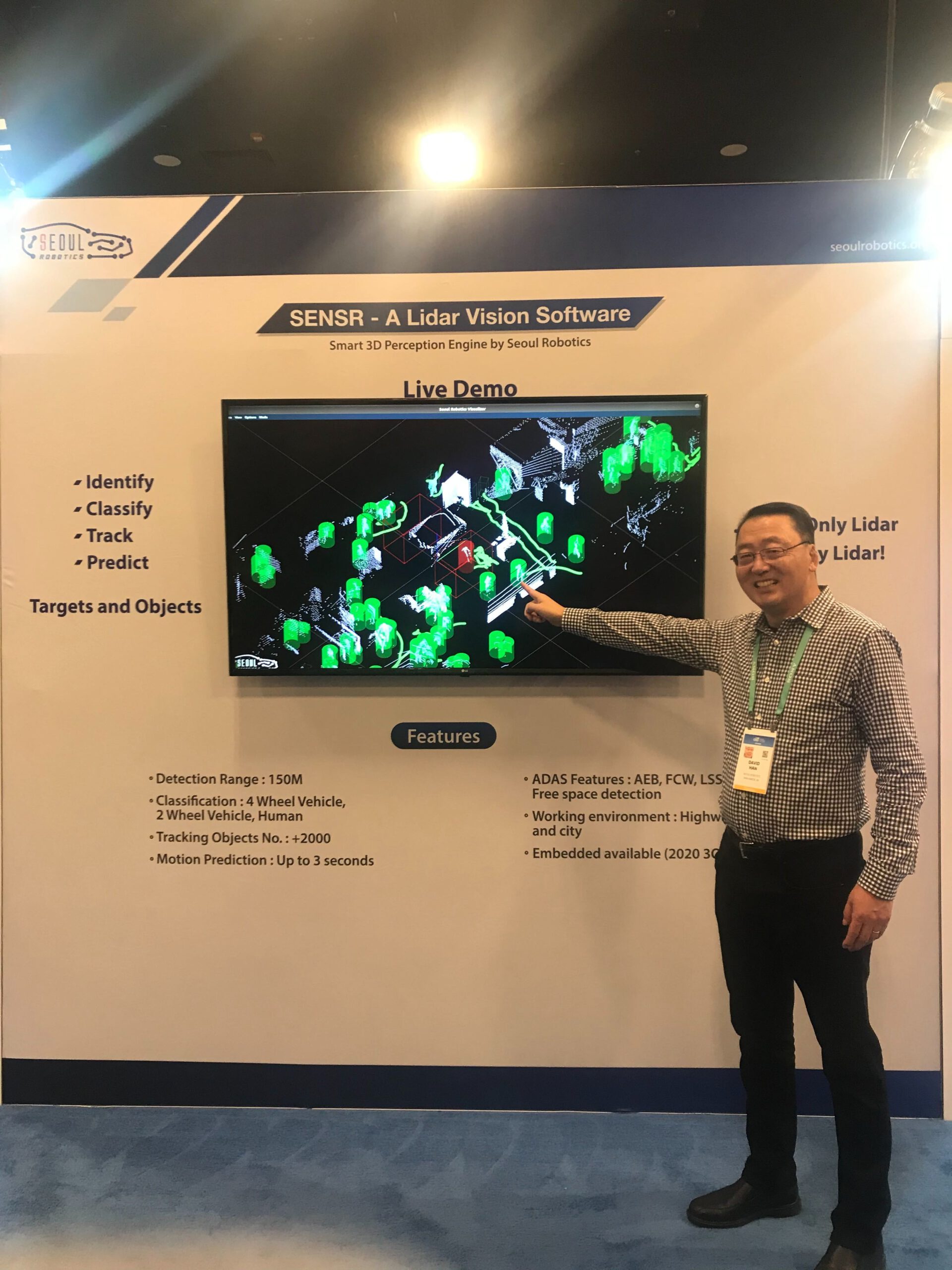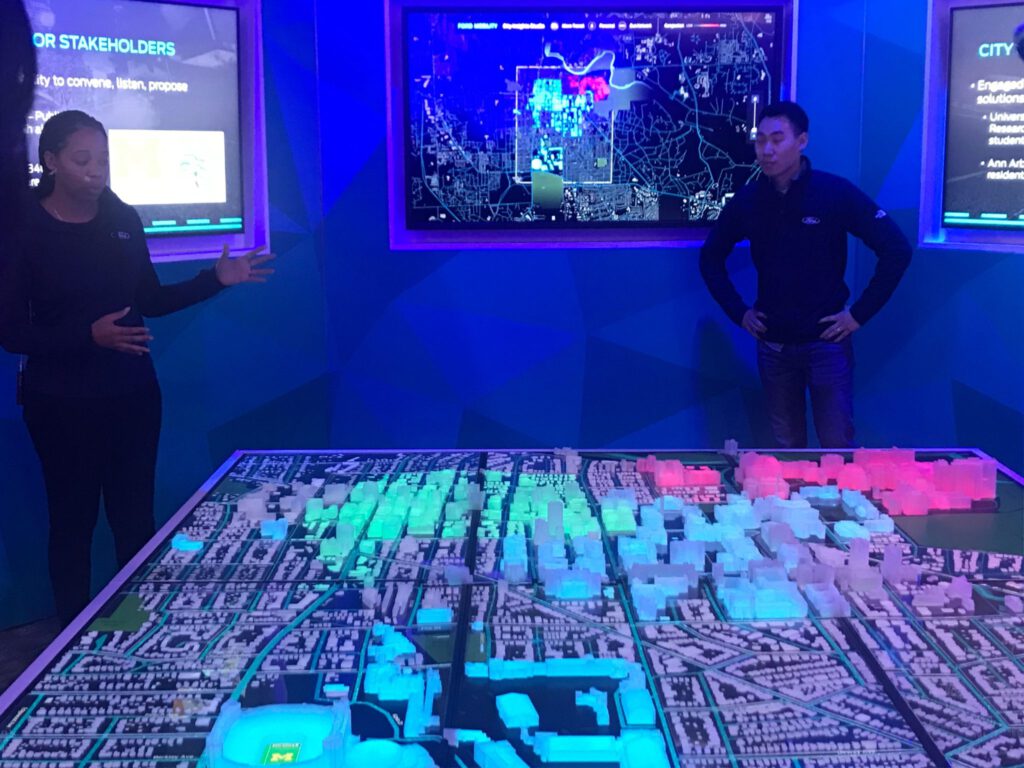
By Komal Doshi, Ann Arbor SPARK Director of Mobility Programs
This was my first time attending CES and I got to witness the growing mobility presence at the show. It was also great to see so many Ann Arbor companies represented there.
Ford City Insights Studio
Ford Smart Mobility had the City Insights Studio on display at its booth. The digital model of Ann Arbor built across six LCD screens and complete with miniature, 3D-printed buildings was incredibly impressive. This display showcased the data and simulation work Ford Smart Mobility did with SPARK, City of Ann Arbor, TheRide, and the University of Michigan to provide insights on congestion, safety, and accessibility.
The City Insights Studio at CES 2020 Ford’s City Insights Studio features a digital model of Ann Arbor.
Toyota Woven City
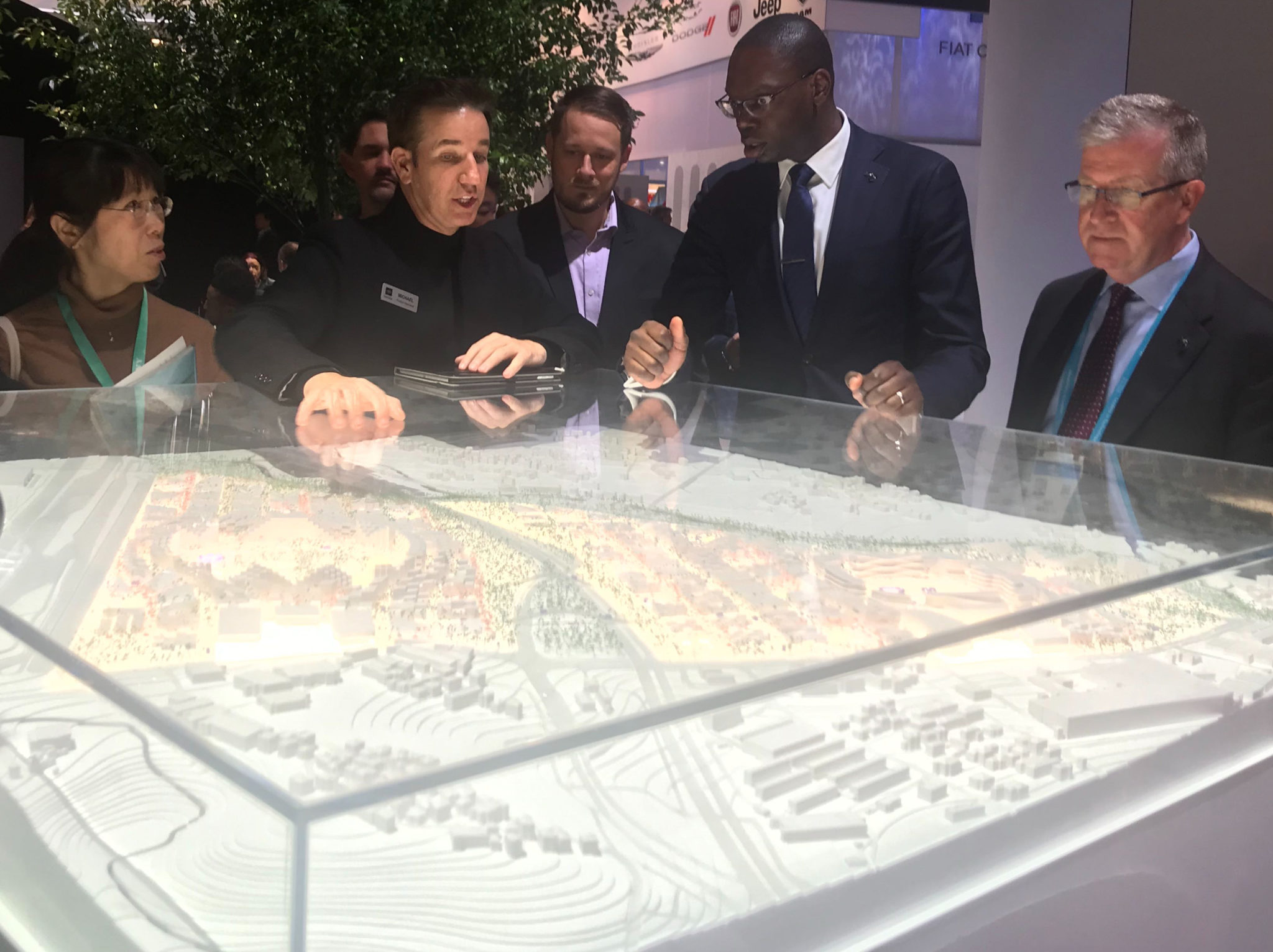
Toyota also unveiled Woven City, a 175-acre prototype city of the future that the company plans to build at the base of Mount Fuji. The city will be powered by hydrogen fuel cell technology and will weave together separate pathways for each type of user. It would be interesting to see if there are any learnings especially from a carbon neutrality standpoint since the City of Ann Arbor has announced its plan to be carbon neutral by 2030.
Autonomous Vehicles and Delivery
There were a number of autonomous vehicles and autonomous delivery robots on display, including Ann Arbor’s very own May Mobility at its partner Cepton’s booth and Refraction AI at its partner Livox’s booth. It was interesting to see some new concept vehicles and new business models that experimented with the experience of interacting with — and traveling within — an autonomous vehicle. The innovations ranged from interior and exterior digital displays, hand gesture recognition, ability to isolate voice commands by location or even create cones of silence, ability to change seat configurations, and even create the right atmosphere with the lights, sound, and smell of your preference. The trend is to make the experience more engaging and personalized even in shared autonomous vehicles.
Ann Arbor-based May Mobility brought its autonomous shuttle to CES 2020 Direct from the streets of Ann Arbor, Refraction AI’s delivery robot.
Data Insights
The growing market of sensors and AI companies were well represented at CES and ranged from hardware and software systems to collect, analyze, and predict data. Companies tried to distinguish their value propositions and experimented with use cases on how the technology could serve different customers. Ann Arbor-based Intvo was present in partnership with AVL and AEye showcasing their offering in the human behavior prediction space while Smart Eye showcased their offerings in driver monitoring and interior sensing. Seoul Robotics, a new addition to the Ann Arbor ecosystem, showcased its 3D perception software platform for Lidar sensors. CES is a good place for showcasing your products and also to experiment with new use cases and partnerships to explore market reaction to your offering.
Intvo joined AVL and AEye at CES 2020. Seoul Robotics recently named Ann Arbor as its North American headquarters.
Aerial Rideshare
Hyundai announced its partnership with Uber to develop and potentially mass-produce air taxis for a future aerial rideshare network. This is the first automotive company to join the Uber Elevate’s growing network that includes Aurora Flight Sciences, which is now a subsidiary of Boeing, Bell, Embraer, Joby Aviation, Pipistrel Aircraft, Karem Aircraft, and Jaunt Air Mobility.
New modes of transportation like urban air mobility (UAM), autonomous vehicles, and even e-scooters are forcing cities to consider how to better utilize and maintain their assets which includes the streets, curbs, and air space. Regulatory coherence is needed across the various levels of federal, state, and local governments to ensure industry sector scaling and ensure continued investment in the space. Industry, on the other hand, needs to work with municipalities to create useful data sharing and safety requirements to ensure that the city can more efficiently manage their assets and create a secure environment for its citizens.
